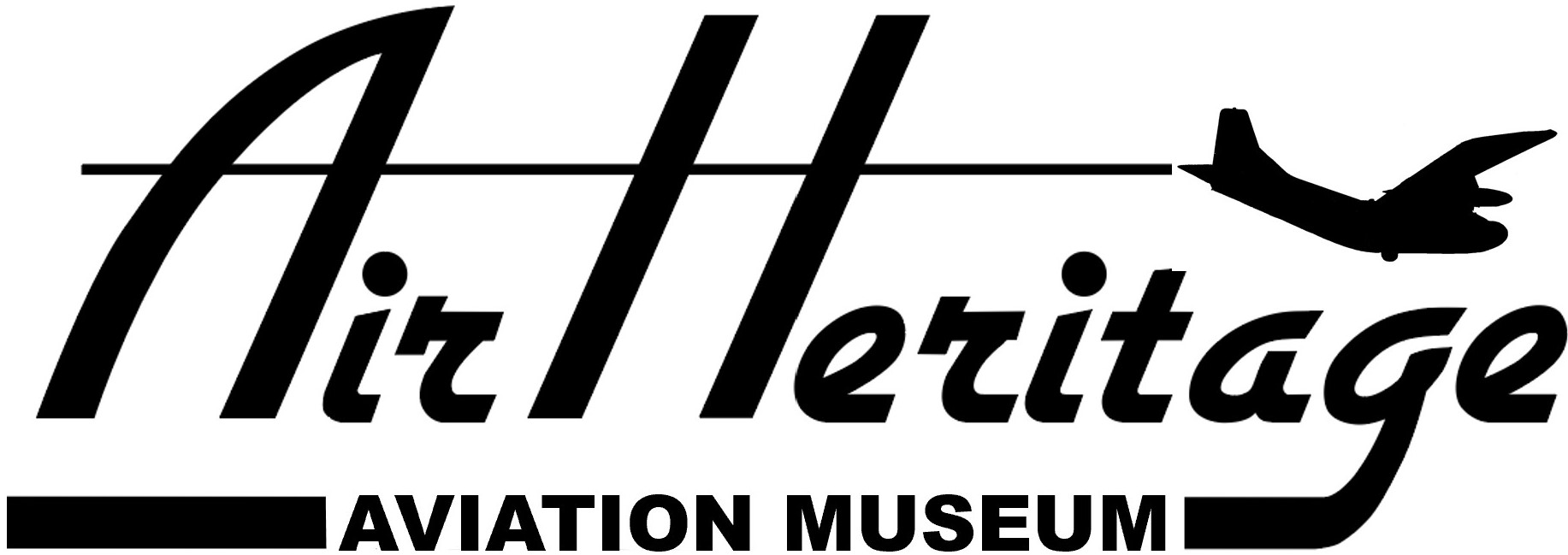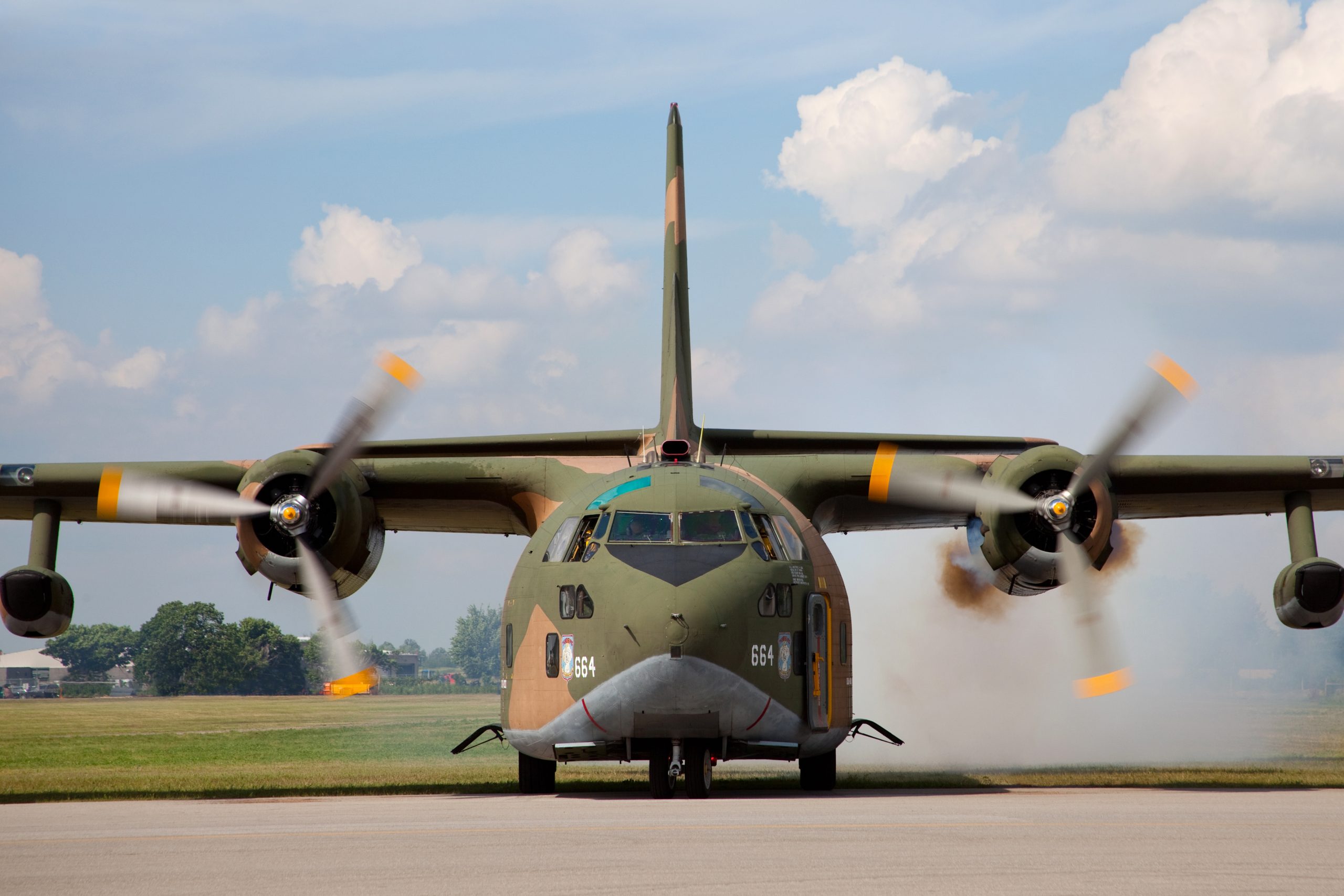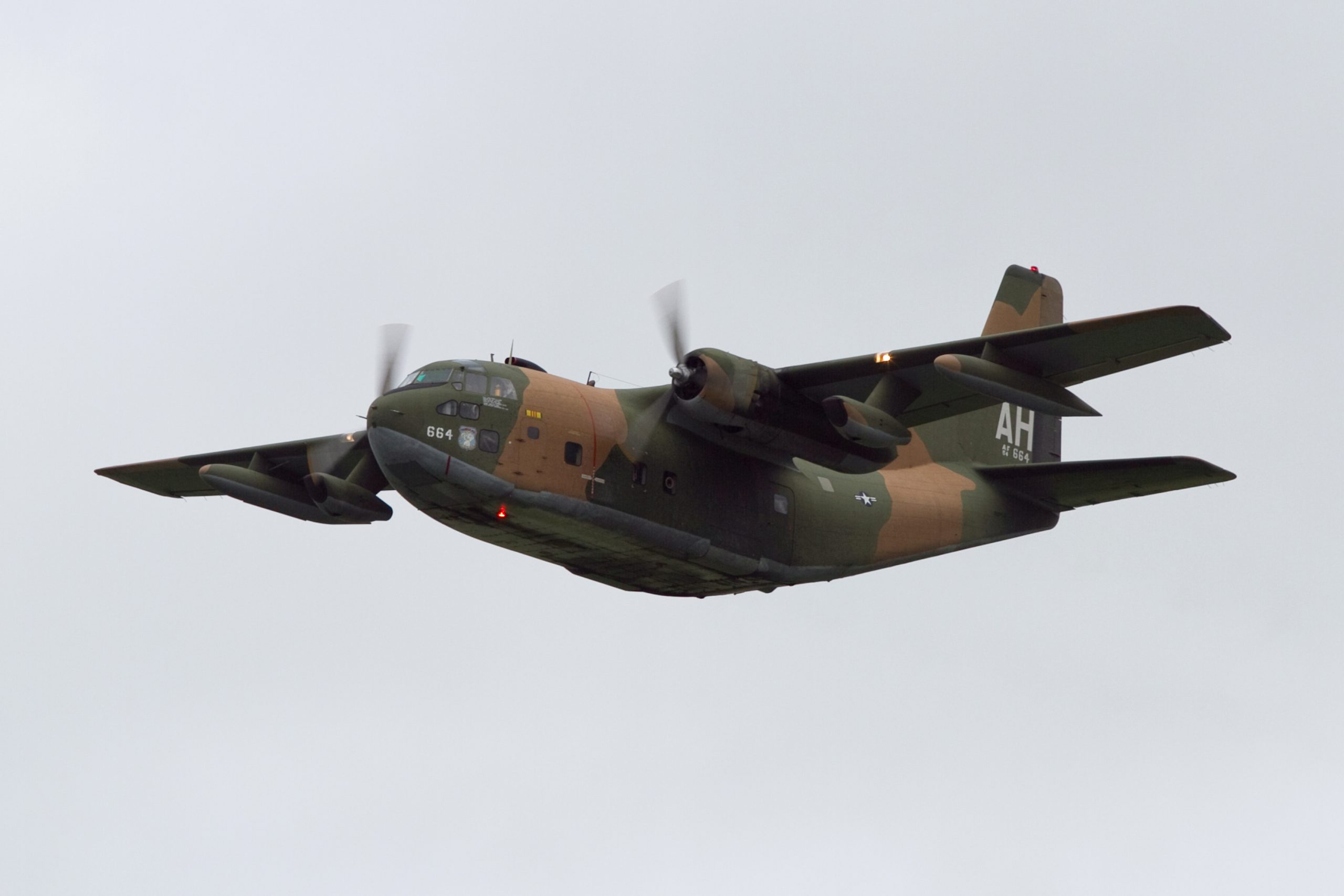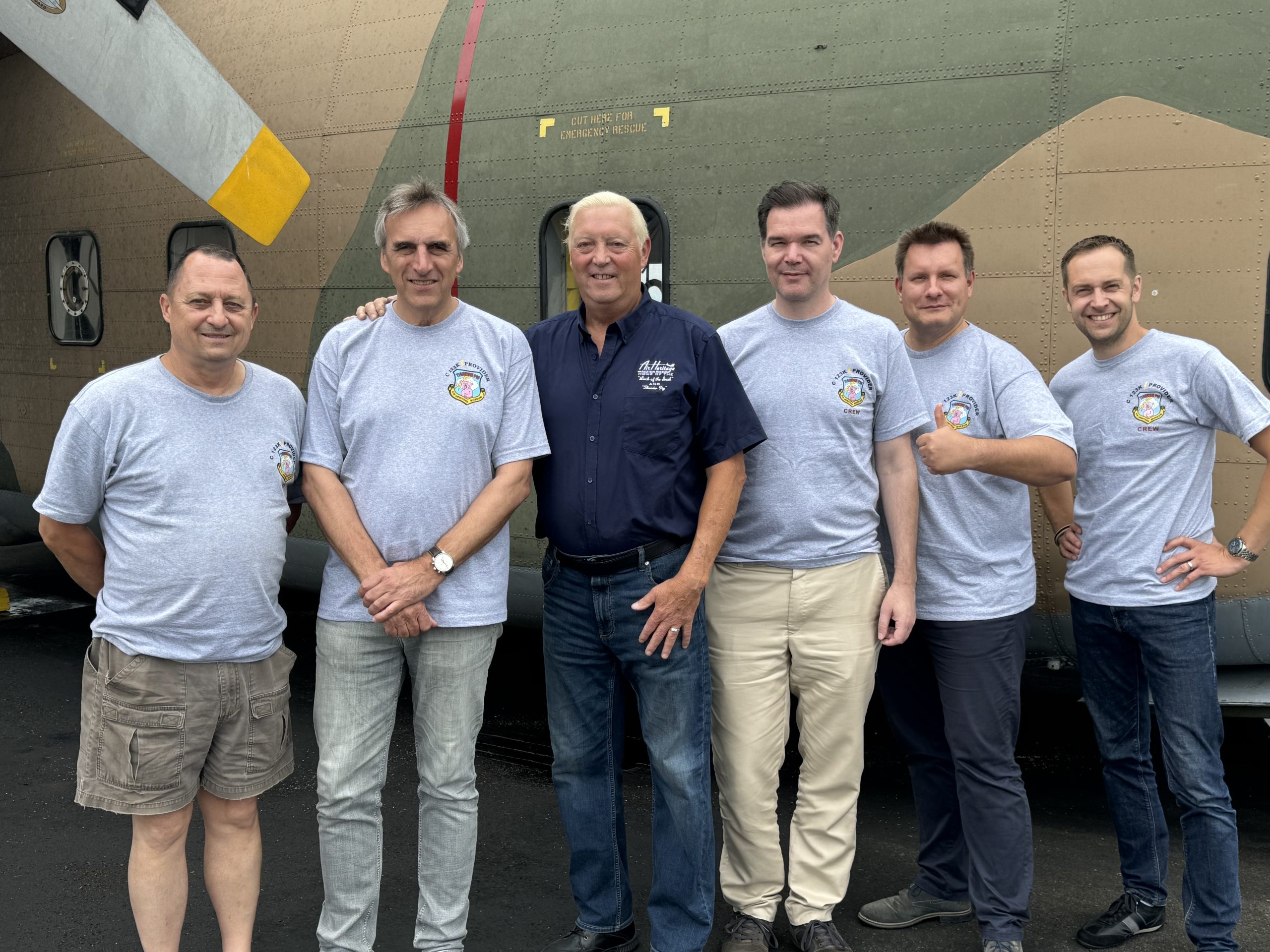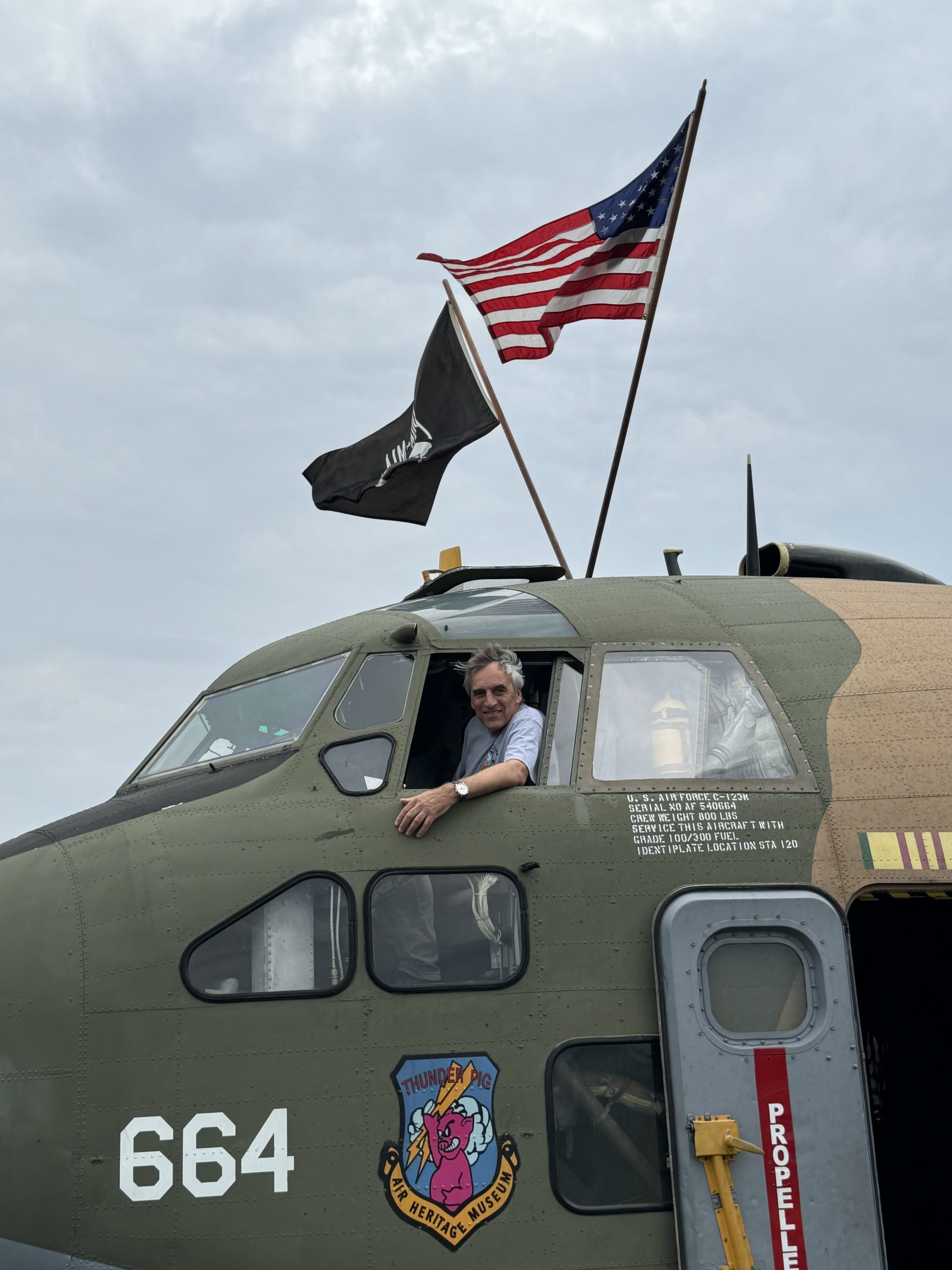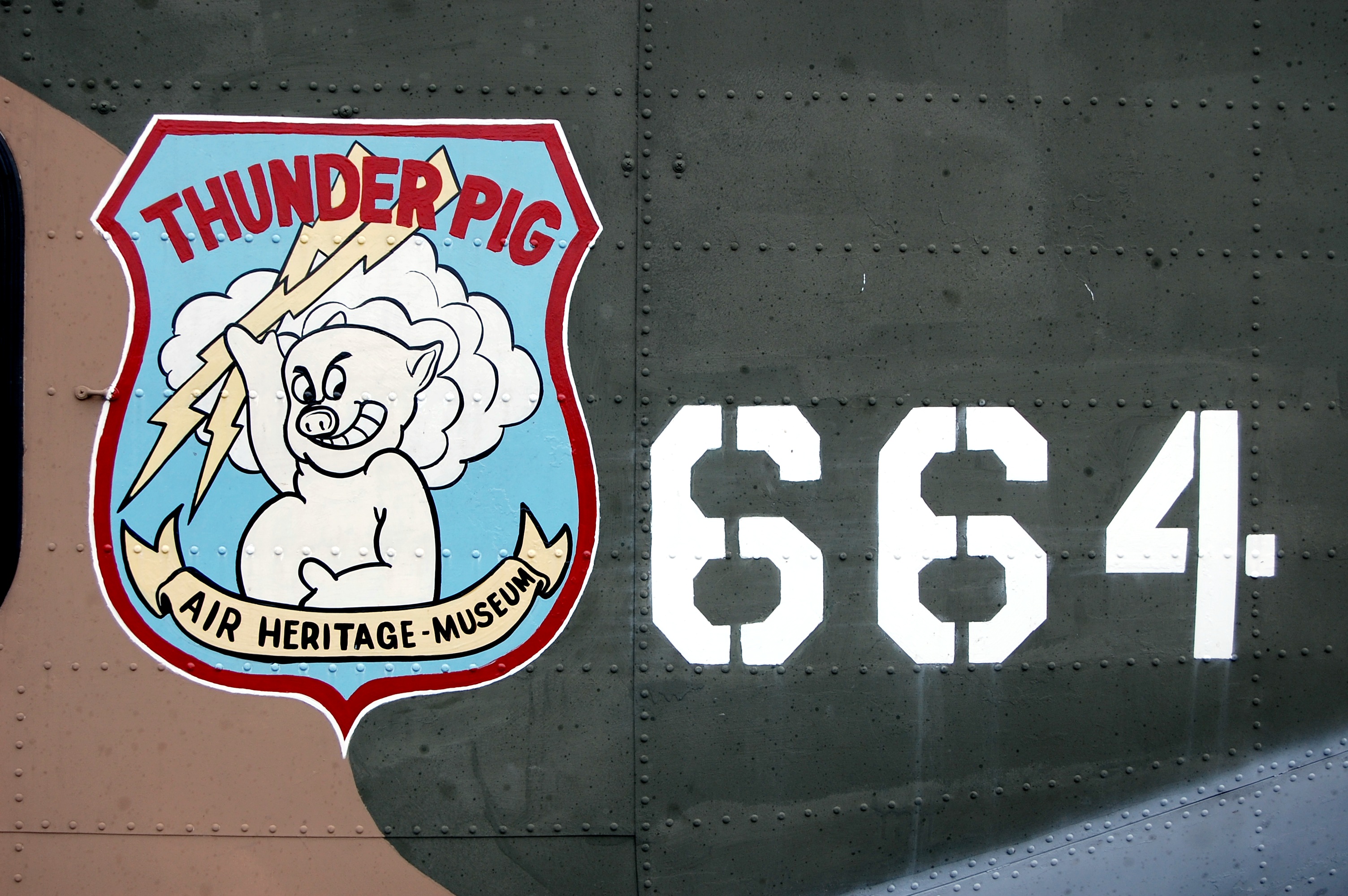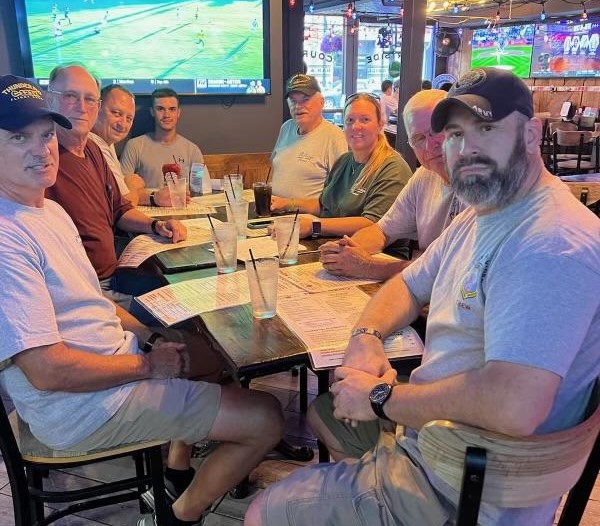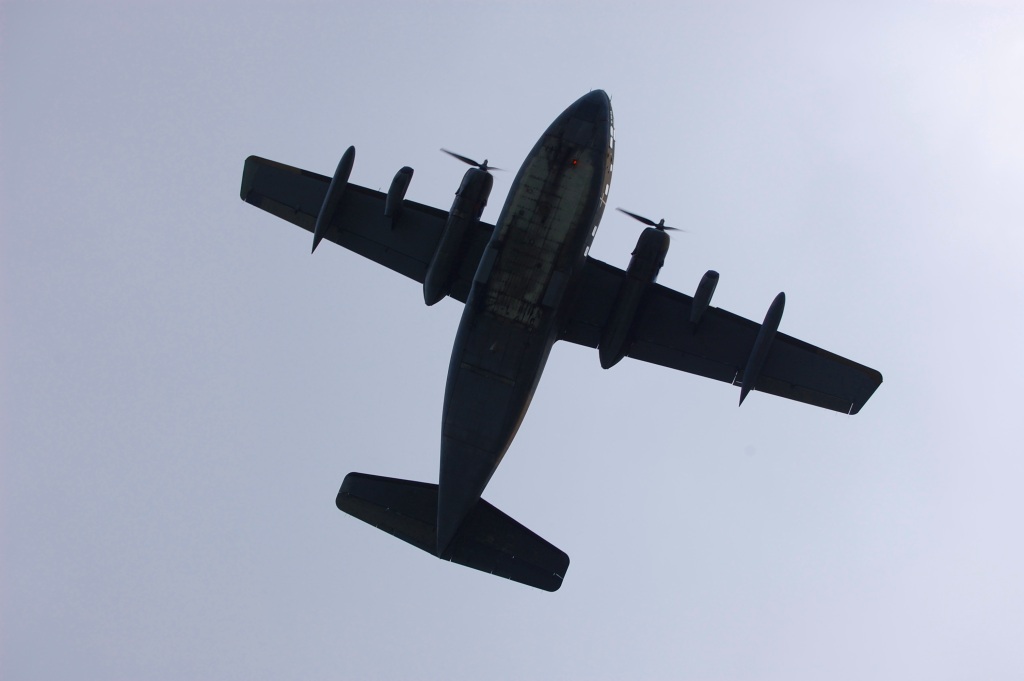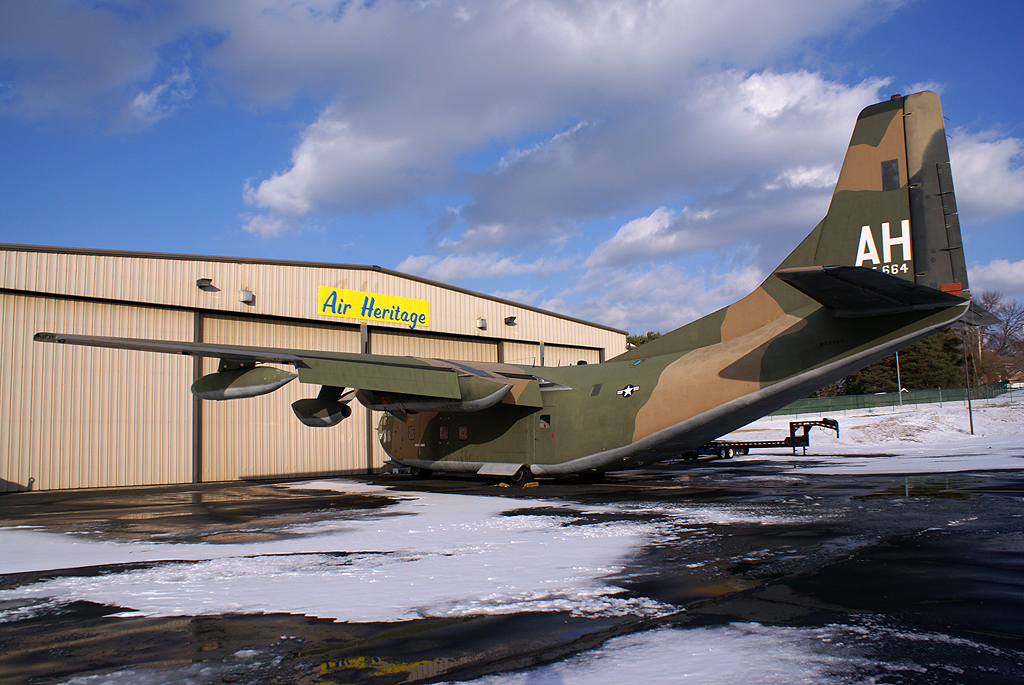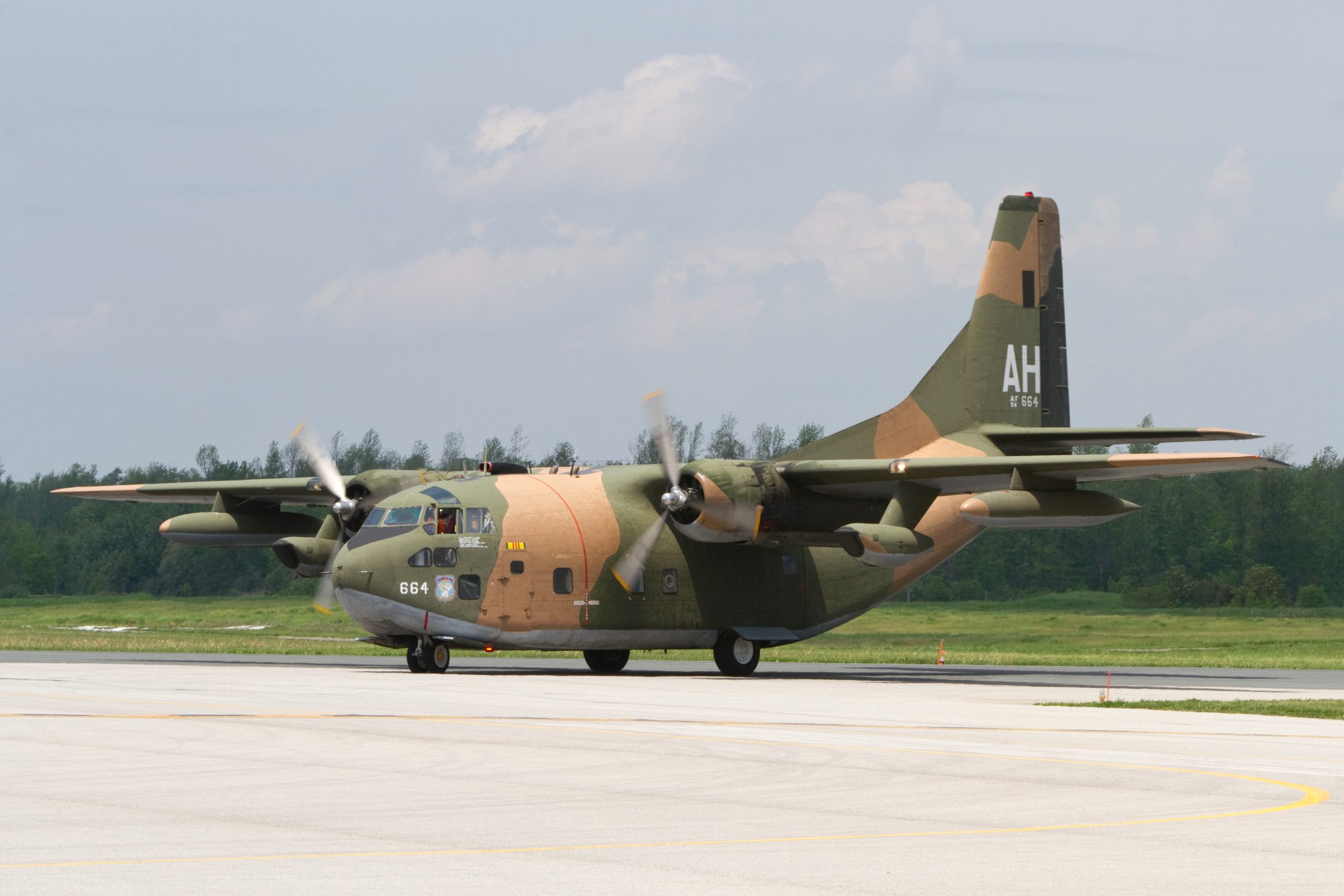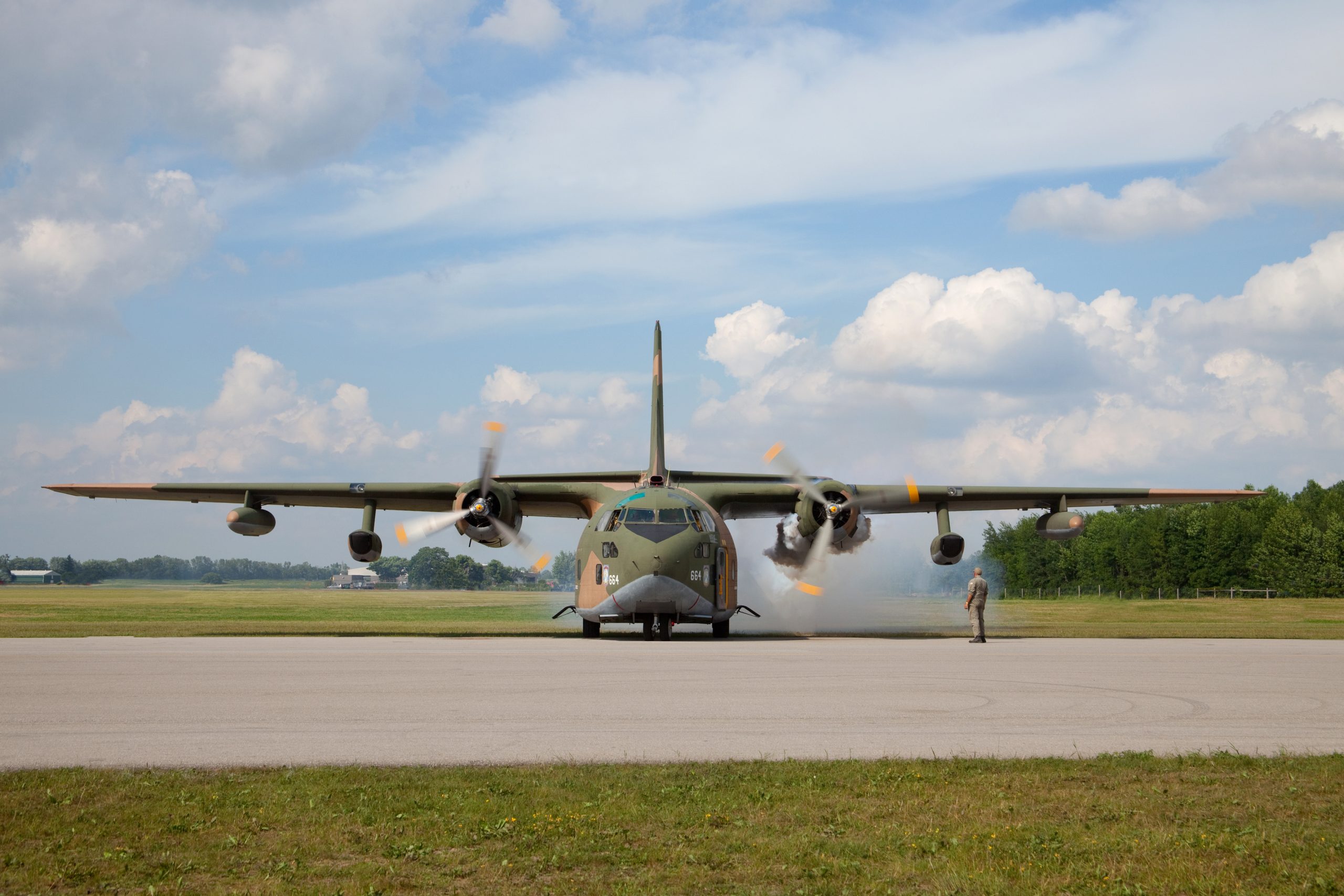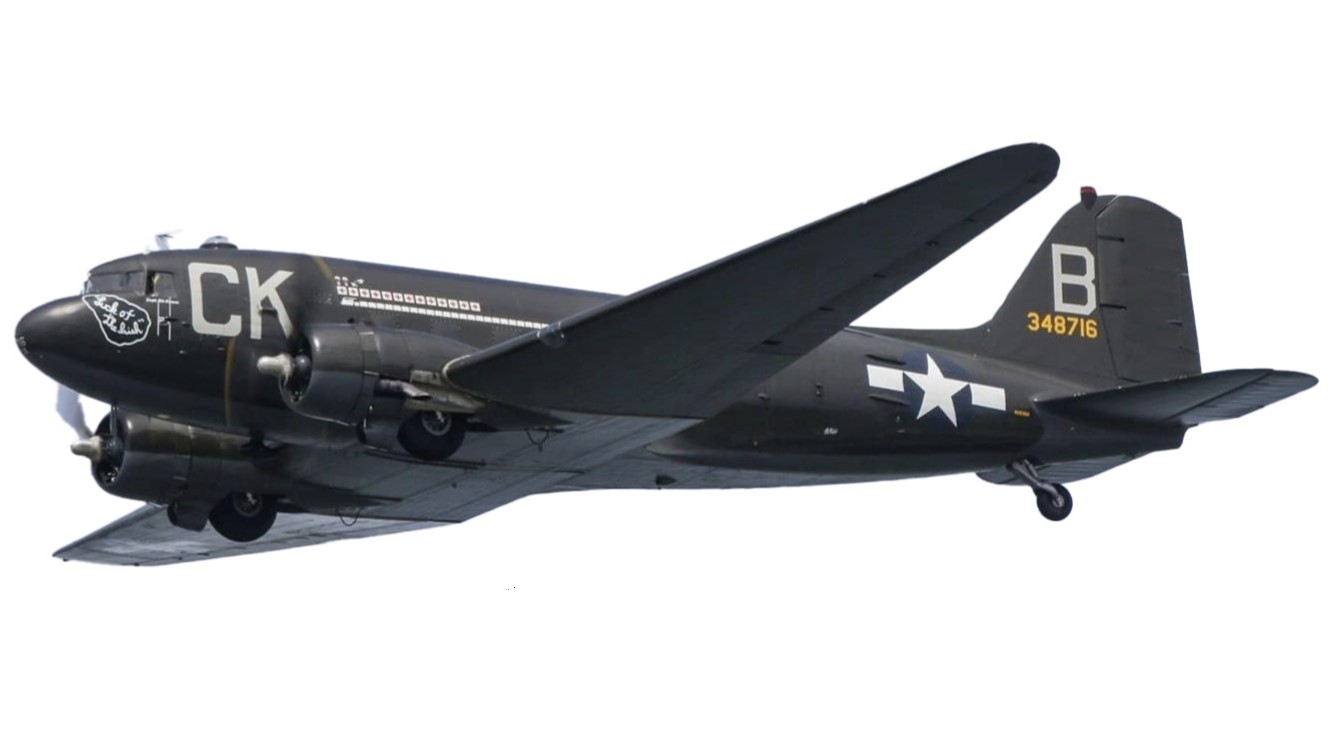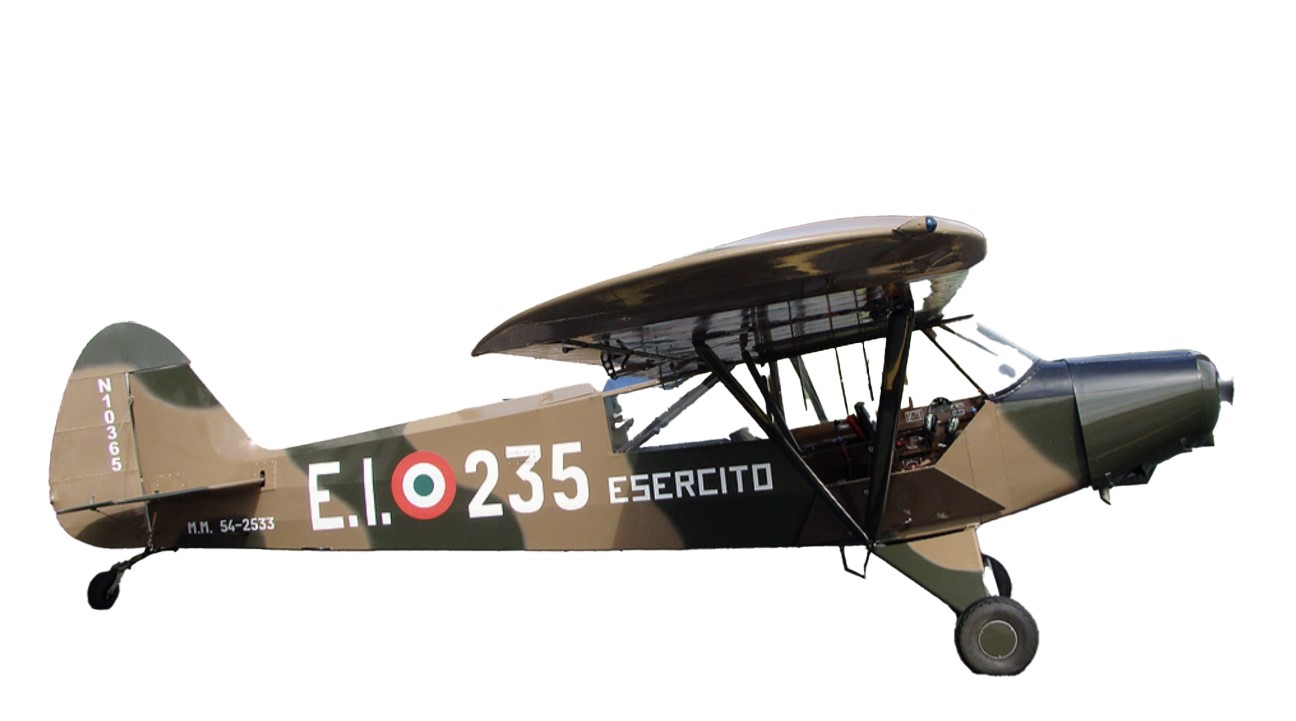The C-123K Provider is a short-range assault transport cargo airplane that was used to airlift troops and cargo onto short runways and unprepared airstrips. It can haul 24,000 pounds, carry 50 injured troops, and fly up to 1,825 miles without stopping
About 300 Fairchild C-123s Providers were built by Chase and then Fairchild Aircraft from 1949 – 1970, and ONLY ONE SURVIVES IN FLYING CONDITION, the “THUNDER PIG,” and we have it right here at AIR HERITAGE AVIATION MUSEUM at the BEAVER COUNTY AIRPORT in CHIPPEWA, PENNSYLVANIA! Our goal is to keep “THUNDER PIG” maintained and in flying condition to honor all of those who served in Southeast Asia during the Vietnam War and in memory of the 58,220 who lost their lives in the conflict. The state of Pennsylvania suffered the fourth highest number of fatalities with over 3,100.
When the United States began de-escalating the war in the early 1970s, American C-123s were either withdrawn or turned over to the South Vietnam, Thailand, or Cambodia. After the Vietnam War, the C-123s were transferred to Air Force Reserve Units to be used as cargo planes until 1980. They were pulled out of service at that time and replaced with the Lockheed C-130 Hercules. Most were sent into storage at Davis-Monthan Air Force Base in Tucson, Arizona (known as the BONEYARD). Our “Thunder Pig” ended up at the BONEYARD in 1981 and it was declared SURPLUS. It sat at the BONEYARD until AIR HERITAGE AVIATION MUSEUM acquired it in 1994. Until the recent past, few people knew that this magnificent warbird has been housed in our museum hangar at the Beaver County Airport and has been displayed and consistently flown to airshows for the last 30 YEARS!
HOW “THUNDER PIG” GOT ITS NAME:
FAIRCHILD AIRCRAFT MANUFACTURED THE C-123, FAIRCHILD also manufactured a fighter plane that was called the THUNDERBOLT (used in Operation Desert Storm). The nickname of the THUNDERBOLT was WARTHOG or HOG! So, when the 911th AIRLIFT WING, a reserve unit that is based at the GREATER PITTSBURGH AIRPORT were using the C-123 for airlift from 1972 – 1980, they nicknamed it the THUNDER PIG or PIG because of its size and in relation to the THUNDERBOLT HOG. Air Heritage Aviation Museum wanted to keep with the nickname that the 911th had for the C-123s.
Chase Aircraft received a contract from the Air Force in 1946 to design an all metal heavy glider which received the designation CG-20. Consideration was given during the design process to possibility of producing a powered version of the CG-20 glider. A CG-20 was fitted a pair of B-47 inboard jet pods and flew under the designation XC-123A and was the first American jet transport. While it provided useful knowledge the four jet engines weren’t well suited for the speed range of the C-123 so two Pratt and Whitney R-2800 radial engines were mounted on a redesigned wing and the resulting transport was designated the C123B. The USAF ordered 302 examples from Chase which were to be built by Kaiser- Frazer under contract. However, because of financial problems with Chase Aircraft the contract was filled by Fairchild. Our peacetime military planners found few uses for a light transport after the C-130 Hercules came into operational use. The C-123 did serve as a logistical support transport for the Defense Dept. Early Warning (DEW) line then under construction in the frigid far north. The increased involvement in Vietnam showed a need for a transport aircraft that could operate out of short unprepared fields. The military effort against the Viet Cong brought the C-123 into fields hacked out of the jungle or a smoothed out dirt strip on a hill. If that wasn’t available parachute airdrops were possible by rolling cargo out the open aft fuselage ramp. In “Operation Ranch Hand” eight Providers were modified to spray defoliant to destroy the heavy vegetation which was providing cover to the enemy troops. In 1966 Fairchild began converting the C-123B model into the C-123K configuration with under wing jet pods, larger tires and high capacity anti-skid brakes. The auxiliary jet pods could be sealed off with a folding cover. Two Providers were modified to the NC-123K configuration which was fitted with night surveillance sensors for detecting trucks and bomblet despondors under Project Black Spot. Other C-123’s known as candlesticks, were fitted with bulk flare dispensers to support night attack missions. When the United States began de-escalating the war in 1970 American C-123s were either withdrawn or turned over to the South Vietnam, Thailand, or Cambodia. The only American flown C-123s still in Southeast Asia were those belonging to Air America., the shadow airline financed by the CIA. After Vietnam the C-123s were transferred to Air Force Reserve Units and finally to storage at Davis-Monthan AFB. The last military mission for the Provider was a UC-123 unit based at Rickenbacker ANGB outside of Columbus, Ohio which was formed to spray anti-mosquito agents around areas of high infestation.
- 4 May 1956: Manufactured by Fairchild Aircraft Corp., Hagerstown, MD and delivered to the USAF
- May 1956: To 513th Troop Carrier (Assault Group – Tactical Air Command), Stewart AFB, TN.
- November 1957: To Middletown Air Material Air Area, Olmstead AFB, PA.
- March 1958: To 551st Airborne Early Warning and Control Wing (Air Defense Command) Otis AFB, MA
- October 1959: To 4650th Combat Support Detachment (ADC) Stewart AFB, NY
- March 1960: To 4603rd Consolidated Maintenance Squadron (AMC) Stewart AFB, NY (Deployment to Myrtle Beach AFB, NC
- May 1962: Deployment to Wright-Patterson AFB, OH
- February 1964: To 1st Air Command Wing (TAC) Hurlburt Field, FL
- July 1964: To Rome Air Deployment Center (AF Systems Command) Griffiss AFB, NY
- June 1965: To AF Missile Deployment Center (AFSC) Holloman AFB, NM
- April 1969: To Hayes Aircraft, Napier Field Dothan, AL
- May 1969: To Fairchild Aircraft Hagerstown, MD (To designation C-123K)
- October 1969: To 317th Tactical Airlift Wing (TAC) Lockbourne AFB, OH
- July 1970: To Military Aircraft Storage and Disposition Center (Davis-Monthan AFB, AZ)
- September 1971: To Hayes Aircraft Napier Field Dothan, AL
- Dec. 1971: To 906th Tactical Airlift Squadron (USAF Reserves) Lockbourne AFB, Deployment to England AFB, LA
- June 1975: To 355th Tactical Airlift Squadron (AFRes) Lockbourne AFB,OH
- February 1976: Lockbourne AFB renamed Rickenbacker AFB
- June 1981: To Military Aircraft Storage and Disposition Center (Davis-Monthan AFB, AZ)
- May 1985: Declared surplus dropped from AF inventory
- April 1994: Crew from Air Heritage (Virgil Wyke, Bill Cambell, Matt Haydack, Russ Wood, and Bob Morelli) left for Tuscon, AZ to assess project to bring C-123k “home”
- April 10, 1994: Second crew comprised of 3 volunteers left for Tucson, AZ to assist crew. C-123 reported to be in better condition than expected and my be flyable in as little as 2 weeks if all goes as planned.
- Apr. 16, 1994: Air Heritage President Bob Gbur joins the crew to begin to attack the mountain of paperwork to get the aircraft off the base.
- May 6, 1994: TEST HOP!! Aircraft Commander Bob Hudock and pilots conducted the test flight and reported that the flight was a success.
- May 7, 1994: Took off from Davis-Monthan AFB and landed in Midland, TX, blew tire on landing. Removing the aircraft from the runway was a monumental task after 7 hrs of hard work. With the help of the Confederate Air Force and Thunderbird Aviation a tire was loaned to the crew that had to be shipped in from AZ. A significant hydraulic leak was detected also.
- May 9, 1994: Removed panel in wing to find hydraulic leak, in driving rainstorm.
- May 10, 1994: The tire was air-freighted in from AZ. Tire was changed in horrible weather, so the crew was forced to stay another night.
- May 14, 1994: C-123K Serial # 54-664 lands at Beaver County Airport at 4:00pm!!
- June 2024: C-123K Serial # 54-664 “THUNDER PIG” owned and operated by Air Heritage Aviation Museum is the last one flying in the world!
- Bill Schillig – Aircraft Commander
- Bob Gbur – Crew Chief
- Pat Hempen – Pilot
- Bill McKendry – Pilot
- John Miller – Pilot
- Blaine Trent – Pilot
- Bill Kormos – Pilot
- Dale Bonner
- Rich Chmell
- Russ Ewing
- Don Mansfield
- Bill Marhoff
- Dave Matthews
- Chris Osman
- Dave Treusch
- Greg Werking
- Bill Whipkey
- Manufacturer: Fairchild Aircraft Co.
- Designation: C-123K Provider
- Wing Span: 100 Ft.
- Length: 76’- 3”
- Height: 34’-0”
- Wing Area: 1,223 Sq. Ft.
- Empty Weight: 31,000 Lbs.
- Gross Weight: 56,600 Lbs.
- Payload: 24,000 Lbs.
- Top Speed: 253 MPH @ 6,00 Ft.
- Cruise Speed: 186 MPH
- Range: 1,340 miles
- Power Plants: 2 – P&W R-2800-99W “Double Wasp” 18 Cyl. Radial engines. 2 – GE J85-GE-17 turbo jets
- Crew: 4
- Capacity: 62 passengers, 24,000 lbs of cargo
- Naked Man
- X-Men: Days of Future Past
- American Made
- Believe
- Boot Camp
